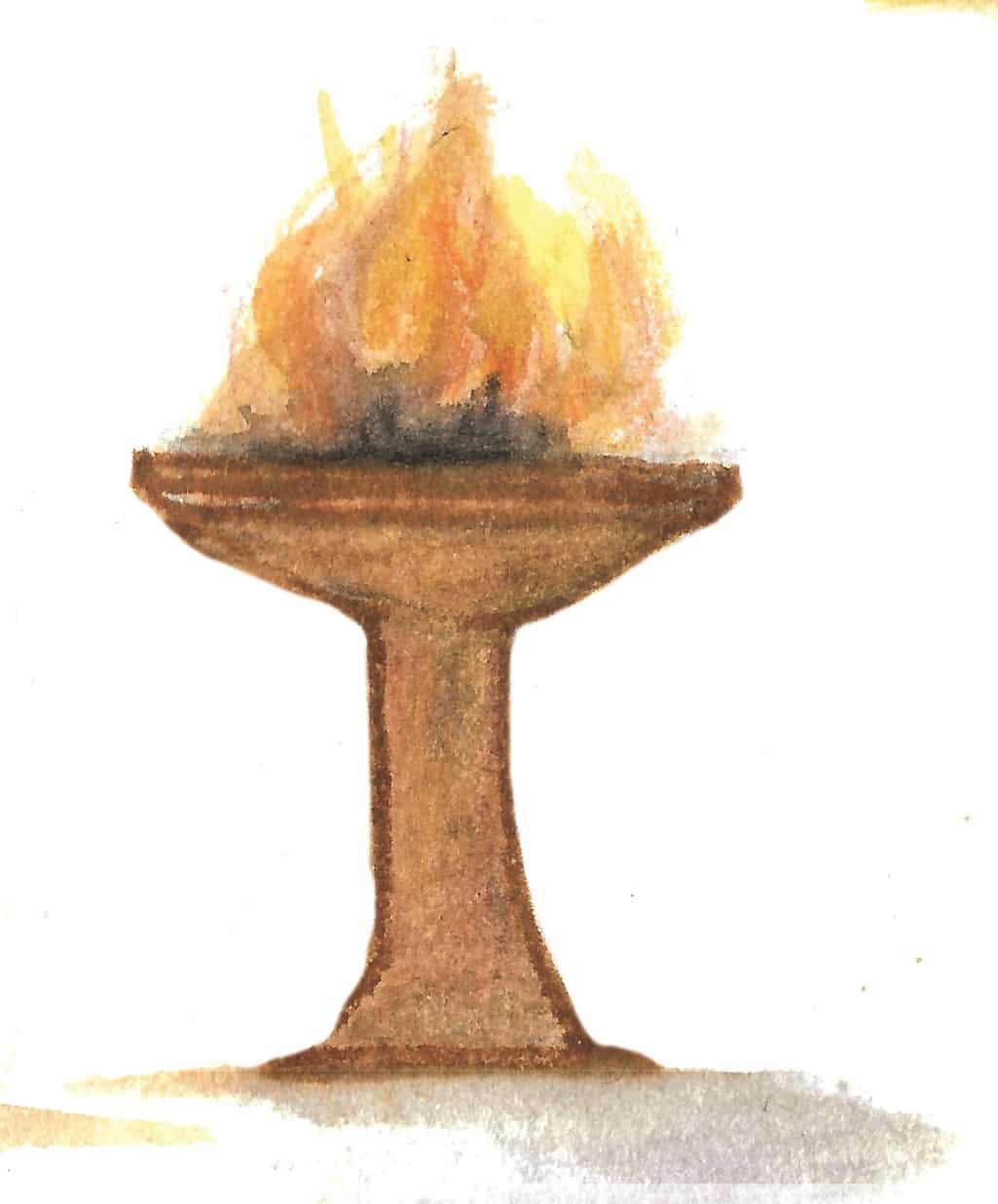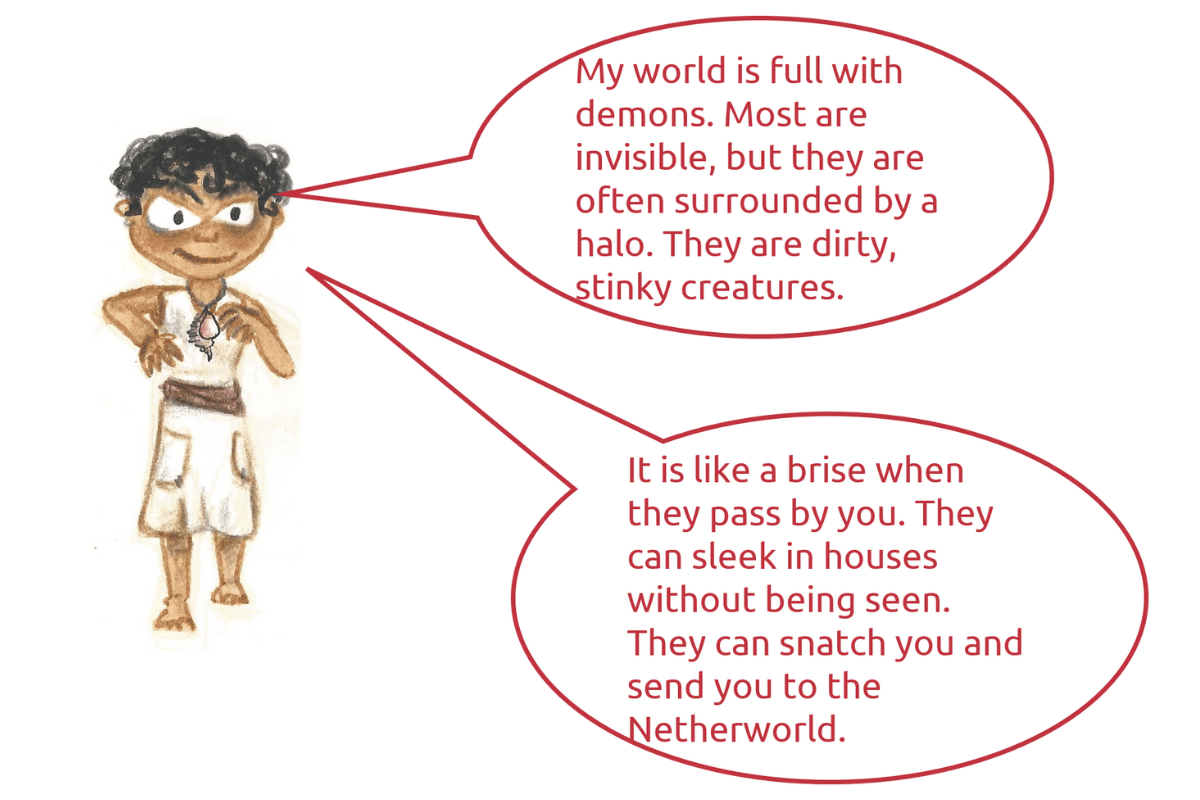
The Netherworld
Beneath the earth, beneath the Apsû, the underground waters, lies an arid, dark and dusty land full of terror: Arali, the Netherworld, kingdom of Nergal and Ereškigal.
In the middle of the Netherworld lies the city Ganzir, which access is closed by seven successive gates. In its heart is the palace of the queen Ereškigal, the "palace of lapis-lazuli".
All dead people are going there, without exception. The "Road of No Return" leads to Arali. Dead people walk along the twisted road or ride a chariot or a donkey to get there, like the Sumerian king Ur-Nammu. Sometimes, they take a boat to cross the "river-which-blocks-a-man’s-way".
To the Netherworld, land of no return,
To the gloomy house, the seat of the Netherworld,
To the house that none leaves who enters,
To the road whose journey has no return,
To the house whose entrants are bereft of light,
Where dust is their sustenance and clay their food.
They see no light but dwell in darkness,
They are clothed like birds in wings for garments,
And dust has gathered on the door and bolt.
The gods of the Netherworld
The Netherworld is ruled by a demonic couple: Nergal and Ereškigal.
They have numerous subjects: dead gods, demons, ghosts and the spirits of the dead.
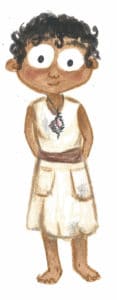
A long time ago, an Assyrian prince dreamt of the Netherworld. This is a proper nightmare! But it tells us a lot about the place and its staff.
The Netherworld is organised like a big household. Here are some members of the staff:
- Namtar, "the one who decrees the fates", son of Ereškigal, is the vizier.
- Geštinanna is the scribe of the underworld: she registers the names of the dead on a tablet, just as if they were workers showing up for the day.
- Ningišzida, the "young hero" is the "chairbearer"; he is the companion of a snake-deity, Ninpeš.
- Humuṭ-tabal is the ferryman.
- Lugalirra and Meslamtea are divine twins, keepers of the gates of the Underworld.
- Nedu is another gatekeeper, in charge of the seven gates that lead to Ganzir.
- Pabilsag is an administrator.
The "offspring of Arali"
Mesopotamian world counts hordes of demons, called the "offspring of Arali". Mesopotamian "demons" are creatures that are in-between the world of the gods and the world of human beings. They are not necessarily "evil": some are "good demons". Those are summoned in incantations to protect people against "bad demons". The great majority of the demons are referred to as groups, often of seven.
The evil utukku, which is set free in the street, seeks contact.
The evil ala, which is set free in the street, envelops the man.
The evil ghost, which is set free in the street, turns the man into a corpse.
The evil gallu, which is set free in the street, snatches the man away
I am very afraid of ala-demons. They have no mouth, no ear. They hide in holes, they wander in the streets to attack lonely people. They even enter houses, disguised as an owl or a bat. They stand at your bed waiting for you to awake. I often have nightmares because of them

Utukkû
They are the dreadful servants of Nergal and are mostly evil (lemnûtu). They are often imagined as weather spirits, winds or storms.
“The seven of them, whose clamour is unpleasant, shared out the heavens,
The Seven of them, whose features changed, shared out the earth.
They are the ones who sweep away the inhabitants in the steppe, and devastate the land,
They sit in silence on the paths and are dispersed below. They are ones who cause silence in the streets".
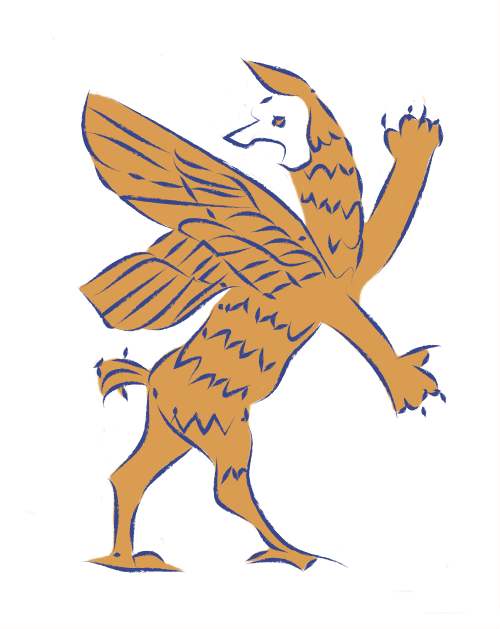
Asakkû
They also are seven and are fearful because they can inflict diseases to people, especially head fevers. It is said that the god Ninurta can protect against them. In Sumer, Asag was a single demon defeated by the god Ninurta.
Lamaštu and Pazuzu:
Unlike the other demons, those two have strong identities, and their features are famous all-around Mesopotamia, even though they are sometimes changing.
Lamaštu
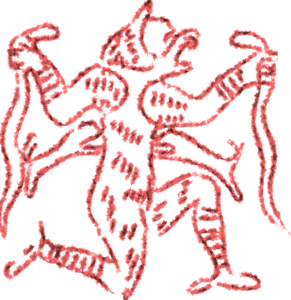
She is one of the most terrifying demonesses, because her favourite time-killer is to snatch babies or small children. All houses are protected against Lamaštu: amulets are put into the houses’ thresholds to keep her away. She has a lion’s head and donkey’s ears; sometimes she holds a dagger or snakes or a… comb which is weird. Mesopotamians have many protections and incantations against Lamaštu.
Pazuzu

One of the best protectors against Lamaštu is Pazuzu. He also is terrifying: he is like an eagle with a lion’s head. Sometimes he is evil, but he also is the only one who succeeded in sending Lamaštu back to the Netherworld! So that he can protect people against her: small children often wear his head, as an amulet, around their neck.
Ghosts and the life of dead people in the Netherworld
Dead people start their journey to Arali from their graves. The sentence of death is pronounced by Ereškigal: she calls out the name of the dead who is standing in front of her.
The Mesopotamian after-death kingdom is not a pleasant place. The spirits of the dead spend their time wandering around, naked or clothed with feathered wings. They are thirsting for water and only have dust to eat.

I had a little brother who died when he still was very young: things are different for him. He is playing and feasting with his new friends at a gold and silver table. This is what Enkidu told Gilgamesh about the spirits of children, and I believe him
Many dead people do not live a happy condition, but it can be softened if the surviving relatives are making regular offerings of food and drinks to the dead.
If they are not fed, ghosts become restless and come to haunt the living: they can “seize” living persons and cause some diseases.
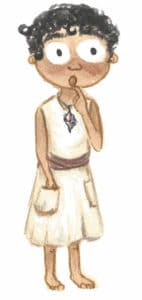
We are giving kispū, offerings, to my grandmother very often. She was a tough woman. If she comes back, she could seize me by entering my body through the ear. Burk.
"Summer Halloween" in Mesopotamia!
There are some periods in the year when demons and ghosts are more likely to come back. During those periods, access between both worlds is easier, so that spirits of the dead return to their families to pay a brief visit. Most of them are not mean: they would not hurt their children or grandchildren. But the galla-demons, who frequently pop up in the world of the living, are more dangerous: they may seize someone and take them straight to the Netherworld!
During moonless nights it becomes so dark that galla-demons can hide in every corner: better be back home before sunset! Those nights are when people give food and drinks to their dead, often in the funerary chapel of the house.
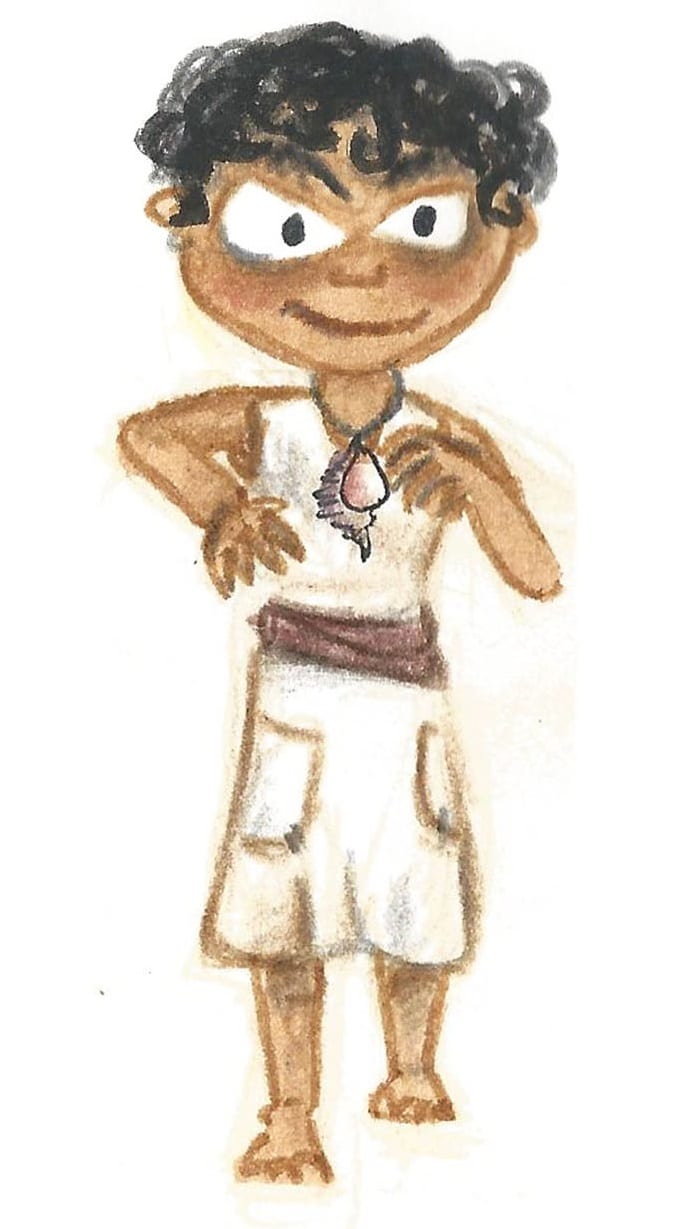
Galla-demons are sent to snatch human beings and drag them to the Netherworld. They are the ones who pursue the young god Dumuzi.

My teacher told me that in ancient times, in Sumer, police officers were called galla, just like the demons. I guess people must have feared the police a lot. It is much better now.
Summer is the time of the year when demons and ghosts often come back to the world of living, that is because harvest is done and seeding season only is in fall: the earth is still, the ground is all parched because of the heat, the fields are empty. Basically: nature is literally dead. The steppe around the cities and the fields is so hot that it feels like being in an oven. Surely: only dead people and demons can safely walk there.

People held rituals and festivals during the moonless nights and summer months. They lit torches and braziers both to keep the demons away and to show the way home to the ghosts of the families' ancestors.
